
 Flash News
Flash News
Murder of Martin Çeço/ Appeal overturns convictions for perpetrators, sends case back for retrial
Accident on "Durrës Road" in Tirana, 3 cars collide
Former head of the DP branch in Vlora elected head of the Cadastre
The Guardian/ The Sazani that was conquered without a single bullet being fired, with a "Wow" from Ivanka Trump
SPAK takes the head of the Procurement Commission as a defendant
How are dairy cows "disappearing"? Albania risks becoming dependent on imports

Albania risks becoming dependent on imports of milk and by-products and also losing its rural and traditional culinary heritage due to the rapid decline in the number of dairy cows.
Official INSTAT data on the number of dairy cows in Albania during 2014–2024 show a dramatic decline in all regions of the country by over 35%.
At the same time, Albania is experiencing one of the highest levels of emigration in Europe, especially in rural and mountainous areas. These two phenomena are not separate; on the contrary, they are directly linked.
Fier is and remains the region with the largest number of dairy cows, although the decline is significant, from over 50 thousand heads in 2014 to around 34,800 in 2024. Compared to 2023, the number of cows in this region increased by 0.5% due to greater investments in farms.
In Elbasan, the decline is dramatic, more than 59% in a decade. Once among the regions with high livestock activity, it has now lost almost two-thirds of its dairy herd. In 2024, the number of dairy cows fell by over 6.5% compared to 2023. This is directly related to the massive departure of residents from the mountainous areas of Librazhd, Gramsh and Belsh towards emigration or urban centers.
Berat has also experienced a significant decline, with the number of cows halved. The loss of population in the villages of Skrapar, Poliçan and Kuçova has led to the contraction of family farming. By 2024 alone, the annual decline in dairy cows was 18 percent, the highest in the country. Livestock in this region has become a symbolic activity, with no development potential. From 2024 to 2024, the decline was 40%, while the annual change by 2024 was 7.4%.
Another region with a significant decline is Gjirokastra. Many villages in Dropull, Libohova have been emptied. The decline in the number of cows is a direct indicator of depopulation: there are no more people to take care of livestock. However, some agro-tourism initiatives have preserved traces of activity in the areas around Tepelena. In 2024, dairy cows recorded an annual decline of 6%, while for a decade 37%.
Although with great livestock potential, Korça has lost more than 11 thousand heads of cows in a decade. The emigration of mountainous areas such as Kolonja and Maliqi, but also the flight of young people towards emigration, have affected the sector. The number of heads fell by 15.7% in 2024 alone, while during the decade the decline was 20%.
In Dibër and Kukës, mountainous regions are experiencing continued decline. In Dibër, where agriculture and livestock were vital, the number of cows has fallen by about a third. In Kukës, the impact is similar.
Shkodra has also seen a sharp decline in the number of dairy cows. Villages such as Puka, Fushë-Arrëzi and Malësia e Madhe have lost the active population that could keep livestock farming alive. However, near the plain areas of sub-Shkodra, some large farms still survive. The number of heads in 2024 alone was reduced by 13 percent, while during the decade by 37 percent.
Lezha is among the regions that have maintained some relative stability compared to others. This is related to the development of intensive agriculture in the lowland areas, but also to the proximity to the large markets of Tirana. However, even here there is a decline and difficulties for small farmers. In 2024 the number of heads remained the same, while during the decade the decline was 20%.
The Durrës region has experienced a significant decline, not only due to rural emigration, but also due to the pressure of urbanization. Large-scale construction and the transformation of agricultural land for construction purposes have displaced livestock activity to the outskirts, causing the number of cows to decrease by more than 40% over the decade, while in 2024 a slight increase was observed.
Even in Tirana, which includes the rural areas of Kamza, Vaqarr Petrela and Baldushku, the number of cows has halved. In 2024 the decline was 3.5%, while in 10 years it was 43%.
Vlora is the only region where the decline is minimal, only 2.8% in ten years.
The decline in the number of dairy cows is a direct reflection of the rural population's emigration, emigration, the lack of long-term agricultural policies, and Albania's increasing orientation towards unsustainable urbanization./ Monitor
Latest news

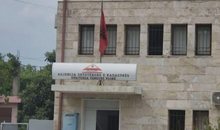



Accident on "Durrës Road" in Tirana, 3 cars collide
2025-06-24 16:52:05
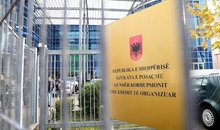
GJKKO sentences Dritan Lleshi to 8 months in prison for unlawful influence
2025-06-24 16:29:29
Former head of the DP branch in Vlora elected head of the Cadastre
2025-06-24 16:19:22

What does facial yoga offer and why is it considered an elixir of youth?
2025-06-24 16:07:40

"Temperatures will reach 40°C"/ AKMC appeals to citizens: Be careful!
2025-06-24 15:36:18

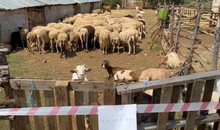
Second outbreak of plague in Korça, over 190 heads of cattle destroyed
2025-06-24 14:57:32
How often should you reapply sunscreen?
2025-06-24 14:44:29
Hitting OSHEE employee, 38-year-old arrested in Tirana
2025-06-24 14:34:37
Albania less competitive in 2024, export businesses fall
2025-06-24 14:20:32

Partial local elections, Berisha: With Edi Rama there are only farces
2025-06-24 14:03:50
Ceasefire Violation, Trump Warns Iran and Israel: Do Not Attack
2025-06-24 13:47:21
Berisha: Fox News slammed Edi Rama as Europe's Ramaduro
2025-06-24 13:38:03
What happened to him? Louis Ailey ends up in the hospital
2025-06-24 13:29:24

Accident in Divjaka, 15-year-old dies while riding a motorcycle
2025-06-24 13:09:38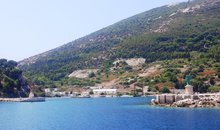

SPAK takes the head of the Procurement Commission as a defendant
2025-06-24 12:55:21

Rutte: US is fully committed to NATO
2025-06-24 12:39:49

SPAK gives the claim for "Metamorphosis", 13 years in prison for Dedan Gjoni
2025-06-24 12:16:29
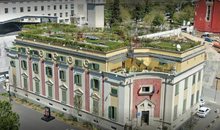
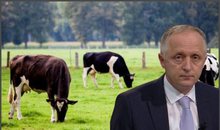
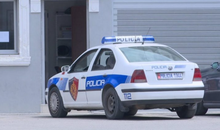
Gunshots in the Institute area
2025-06-24 11:33:15


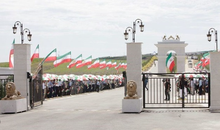

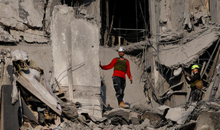
Iran violates ceasefire, attacks Israel with missiles
2025-06-24 10:24:50
Oil prices drop sharply after Iran-Israel ceasefire
2025-06-24 10:12:45
A London company is taking care of Erion Veliaj's reputation
2025-06-24 10:04:43
Milan offers 27 million euros for Albanian talent
2025-06-24 09:58:42
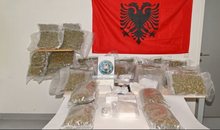
Albanian cocaine gang busted in Germany, uncle and nephew 'heads' of the group
2025-06-24 09:32:10
Apartment adapted for prostitution, Chinese woman arrested, 1 other wanted
2025-06-24 09:24:44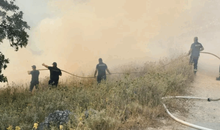
Three fires still active in the country! Here are the most problematic areas
2025-06-24 09:13:59
Israel agrees to ceasefire with Iran
2025-06-24 08:59:03

Foreign exchange, how much foreign currencies are sold and bought today
2025-06-24 08:39:02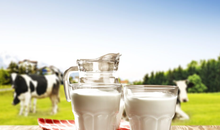
How are dairy cows "disappearing"? Albania risks becoming dependent on imports
2025-06-24 08:27:28
Horoscope, what do the stars have in store for you?
2025-06-24 08:17:36
Weather forecast, how temperatures will change during the day
2025-06-24 08:04:54
Morning Post/ In 2 lines: What mattered yesterday in Albania
2025-06-24 07:47:57



US bombings of Iran, Haxhiu: Radical groups bring the risk of escalation
2025-06-23 22:05:53
May 11, Bardhi: The DP was faced with the state and its other dark sides
2025-06-23 21:41:53
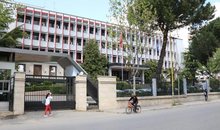


Kosovo - far from the Middle East, but close to the consequences
2025-06-23 20:24:48
War/ Iran notified Qatar before attack on US air base
2025-06-23 20:14:27
Accident on the Shkodër-Muriqan axis, two injured
2025-06-23 19:54:18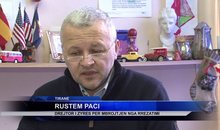
Is Albania at risk from radiation in case of nuclear attacks? Expert explains
2025-06-23 19:49:11

Another operation in Abu Dhabi, one of Dritan Gjika's associates arrested
2025-06-23 19:19:52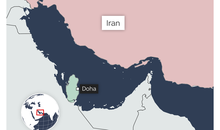
Iran retaliates against US, attacks US air base in Qatar with missiles
2025-06-23 19:00:47


KPA upholds dismissal of prosecutor Çlirim Sino
2025-06-23 18:26:38
Changes in life and career growth, here are the three luckiest signs of the week
2025-06-23 18:23:05


New Bureau Director
2025-06-23 17:40:36


Rutte: US attacks on Iran 'did not violate international law'
2025-06-23 16:57:06


War/ Germany takes precautions in case of retaliation from Iran
2025-06-23 16:20:28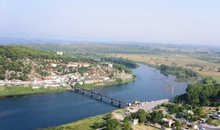
A 70-year-old man is found dead in the Buna River
2025-06-23 16:07:35
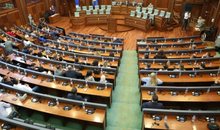
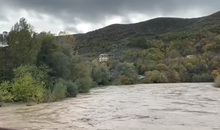
A dead body is found in the Shkumbin River
2025-06-23 15:21:50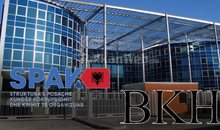


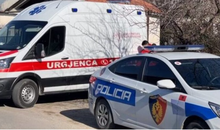
Accident in Prrenjas, car hits and kills pedestrian
2025-06-23 14:20:12
Salianji requests conditional release, here's when the decision will be made
2025-06-23 14:03:10

What is the Strait of Hormuz and what happens if Iran blocks it?
2025-06-23 13:28:25



The 36th attempt fails, Kosovo still without a new Parliament
2025-06-23 12:17:11
Recount/ Dogjani clashes with Ilir Rusmal: Steal votes, with what right?
2025-06-23 11:59:50
